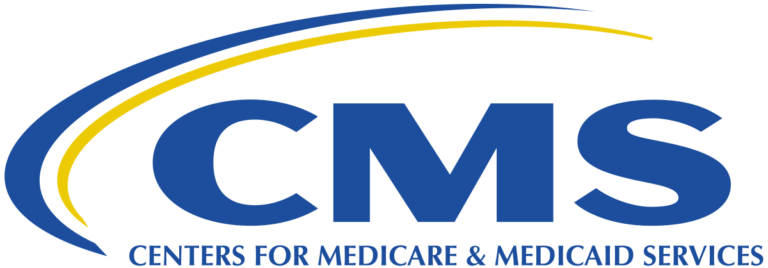MIPS 10: Future Trends and Updates in MIPS for Physical Therapy Clinics

In this article we’ll explore MIPS Compliance and Audits. If you haven’t already read the first 3 articles in this series, you can click the following to read them, and if you need the MIPS Quick start guide from Medicare you can get that here.
Emerging Trends in MIPS Reporting
In the ever-evolving healthcare landscape, it is crucial for physical therapy clinic owners to stay updated on the latest trends in MIPS reporting. The Merit-based Incentive Payment System (MIPS) has become a significant component of reimbursement for physical therapy clinics, and understanding the emerging trends can help clinics optimize their performance and ensure maximum incentives.
One of the emerging trends in MIPS reporting for physical therapy clinics is the focus on patient outcomes and value-based care. MIPS reporting now places a greater emphasis on patient-reported outcome measures (PROMs) and functional status assessments. Clinic owners need to prioritize collecting and reporting data on patient outcomes to demonstrate the value and effectiveness of their services.
Another trend in MIPS reporting is the increased use of technology and electronic health records (EHRs). Clinic owners should invest in EHR systems that are MIPS-ready and capable of capturing and reporting the required data. This technology can streamline the reporting process, reduce administrative burden, and provide accurate and timely data for MIPS reporting.
Furthermore, interoperability and data exchange have become essential in MIPS reporting. Clinic owners should ensure that their EHR systems can seamlessly exchange data with other healthcare providers and registries. This allows for a more comprehensive view of patient care and outcomes, which is crucial for achieving high MIPS scores.
The involvement of physical therapists in alternative payment models (APMs) is also an emerging trend in MIPS reporting. Clinic owners should explore opportunities to participate in APMs, such as bundled payment models or accountable care organizations (ACOs). These models align with the goals of MIPS reporting and can provide additional incentives for clinic owners who meet their performance targets.
Lastly, staying informed about changes and updates to the MIPS program is crucial for clinic owners. The Centers for Medicare and Medicaid Services (CMS) regularly release updates and modifications to the program, and clinic owners should actively seek out this information to ensure compliance and optimize their MIPS reporting strategies.
In conclusion, staying abreast of emerging trends in MIPS reporting is vital for physical therapy clinic owners. By focusing on patient outcomes, utilizing technology and EHR systems, prioritizing interoperability, exploring APMs, and staying informed about program updates, clinic owners can ensure maximum incentives and continued success in the MIPS program.
Potential Changes and Updates in MIPS Requirements
As physical therapy clinic owners, it is crucial to stay up-to-date with the ever-changing landscape of MIPS (Merit-Based Incentive Payment System) requirements. The Centers for Medicare and Medicaid Services (CMS) regularly introduce updates and modifications to ensure the program’s effectiveness and align it with the evolving healthcare system. In this subchapter, we will explore potential changes and updates in MIPS requirements that are specifically relevant to physical therapy clinics.
One potential change in MIPS requirements could be the addition of new quality measures specifically tailored to physical therapy services. CMS recognizes the unique nature of physical therapy and the need for measures that accurately reflect the quality of care provided. These new measures may focus on outcomes related to musculoskeletal disorders, functional improvement, patient satisfaction, or other relevant factors. As clinic owners, it is important to familiarize ourselves with these potential changes and assess how they may impact our reporting and performance.
Another possible update in MIPS requirements could be the expansion of the Promoting Interoperability (PI) category to include more electronic health record (EHR) functionalities. CMS has been encouraging the adoption and meaningful use of EHRs, and they may introduce new requirements to further enhance the interoperability and data exchange capabilities of these systems. Clinic owners should monitor these updates to ensure their EHRs are equipped to meet the revised criteria and maximize their performance in the PI category.
Additionally, CMS may introduce changes in the Improvement Activities (IA) category to better align with the goals of physical therapy clinics. This category focuses on activities that aim to improve clinical practice, care coordination, patient engagement, and patient safety. The updates may include new IA options specifically designed for physical therapy clinics, such as implementing evidence-based protocols, providing patient education materials, or utilizing telehealth technologies. By actively participating in these activities, clinic owners can improve both patient outcomes and their MIPS scores.
Lastly, it is essential to keep an eye on potential updates to the Cost category. While currently weighted at 0% for physical therapy clinics, CMS may choose to modify this in the future. Understanding the potential impact of cost measures on reimbursement and identifying strategies to optimize cost-efficiency within the clinic is crucial for financial stability.
In conclusion, staying informed about potential changes and updates in MIPS requirements is vital for physical therapy clinic owners. By anticipating and adapting to these changes, we can ensure compliance, optimize our scores, and ultimately provide the best possible care to our patients while maximizing financial incentives.
Staying Ahead of the Curve: Continuous Learning and Adaptation
As a Physical Therapy Clinic Owner, it is crucial to stay ahead of the curve in terms of industry trends, regulations, and best practices. One area that requires your attention is the Merit-based Incentive Payment System (MIPS) for Physical Therapy Clinics. To truly master MIPS and maximize its benefits for your clinic, continuous learning and adaptation are key.
The healthcare industry is constantly evolving, and MIPS is no exception. It is imperative that you and your clinic stay informed about the latest updates, changes, and requirements related to MIPS. This involves actively seeking out educational resources, attending conferences and workshops, and participating in online forums and discussions. By continuously learning about MIPS, you can ensure that your clinic remains compliant and takes full advantage of the incentives and rewards it offers.
Adaptation is equally crucial when it comes to MIPS for Physical Therapy Clinics. As new data collection methods, reporting requirements, and performance measures are introduced, you must be willing to adapt your clinic’s processes and workflows accordingly. This may involve implementing new technologies, retraining staff, or revising documentation practices. By staying adaptable, you can seamlessly incorporate MIPS into your clinic’s operations and achieve optimal results.
In addition to learning and adaptation, collaboration with other Physical Therapy Clinic Owners is invaluable. By sharing experiences and insights, you can gain a deeper understanding of how MIPS affects different clinics and learn from each other’s successes and challenges. Consider joining professional associations or networks that focus on MIPS for Physical Therapy Clinics, where you can connect with like-minded professionals who are also striving to master this complex system.
Continuous improvement is at the core of staying ahead of the curve with MIPS. Regularly evaluate your clinic’s performance, identify areas for improvement, and implement strategies to enhance patient outcomes and meet MIPS requirements. This might involve implementing evidence-based practices, enhancing patient engagement, or optimizing clinical workflows. By continually striving for excellence, you can position your clinic as a leader in the field and ensure long-term success.
To truly master MIPS for your Physical Therapy Clinic, it is essential to embrace continuous learning and adaptation. By staying informed, adapting to changes, collaborating with peers, and continuously improving your clinic’s practices, you can position yourself at the forefront of the industry. Remember, MIPS is not a one-time endeavor, but an ongoing journey that requires dedication, perseverance, and a commitment to delivering high-quality care to your patients while maximizing your clinic’s potential.





